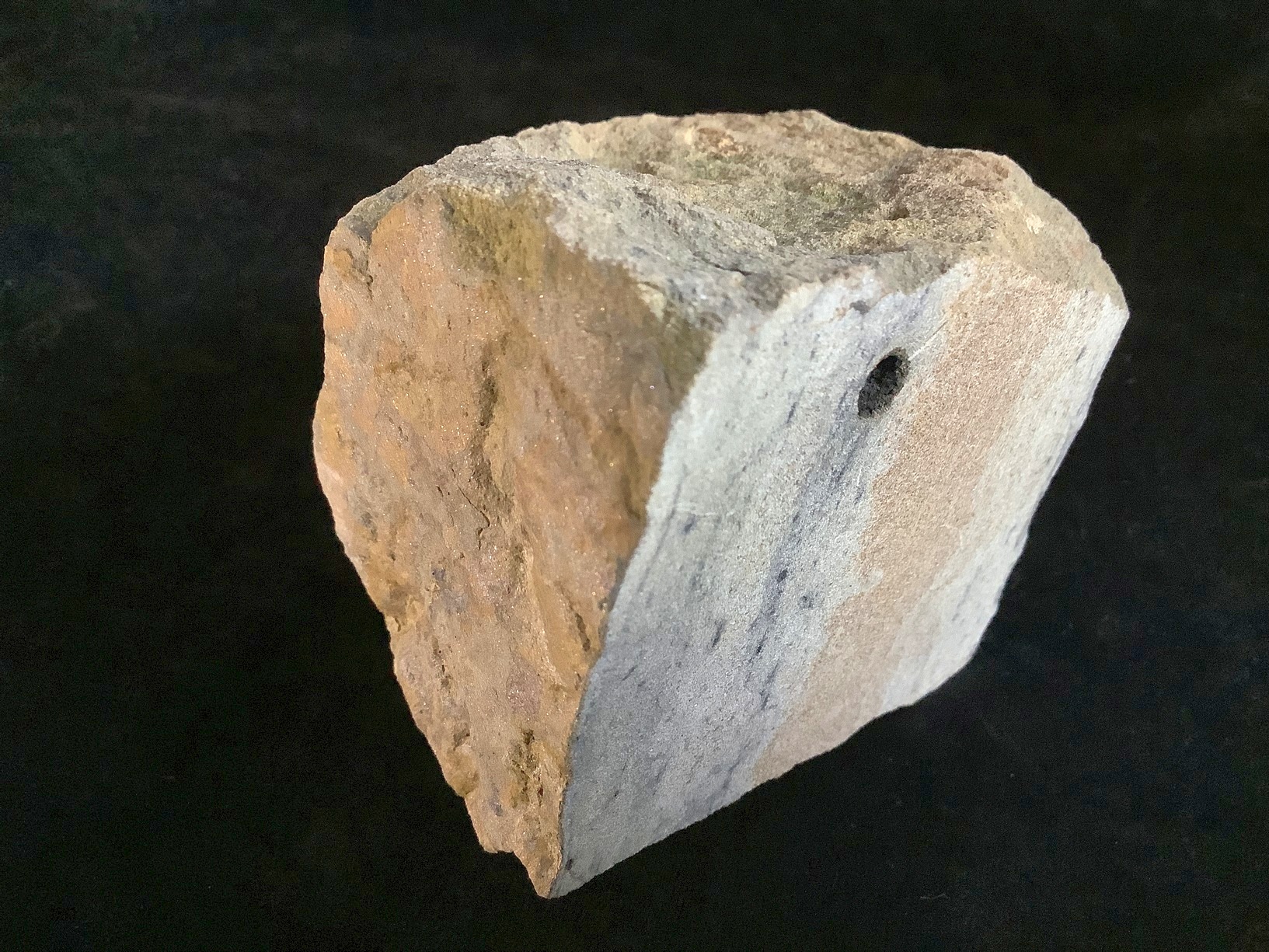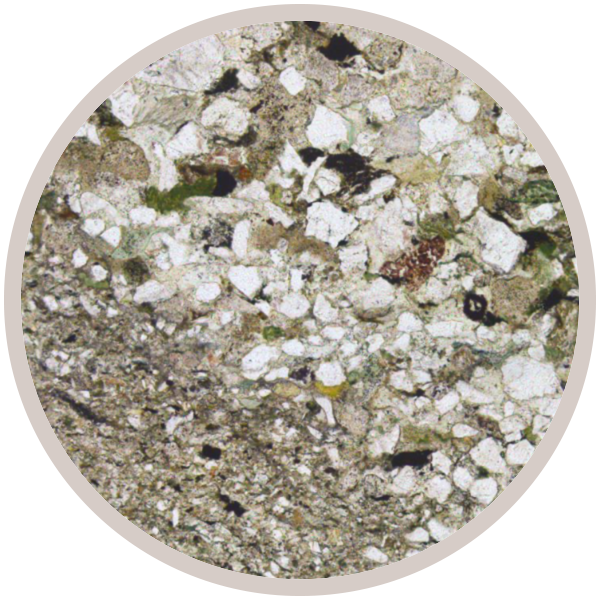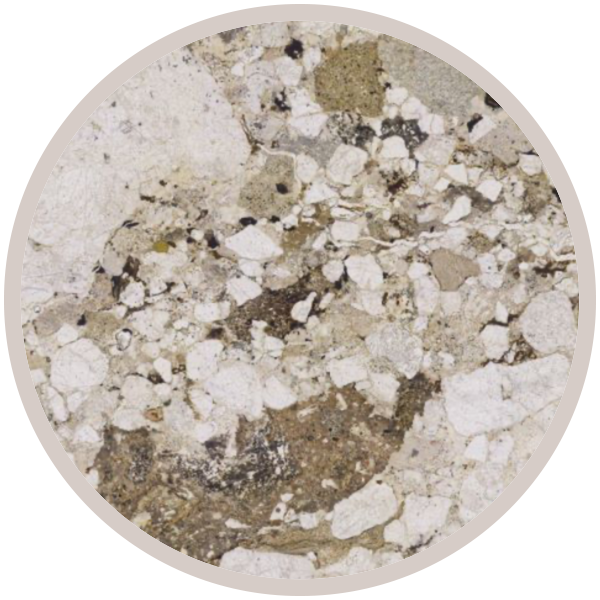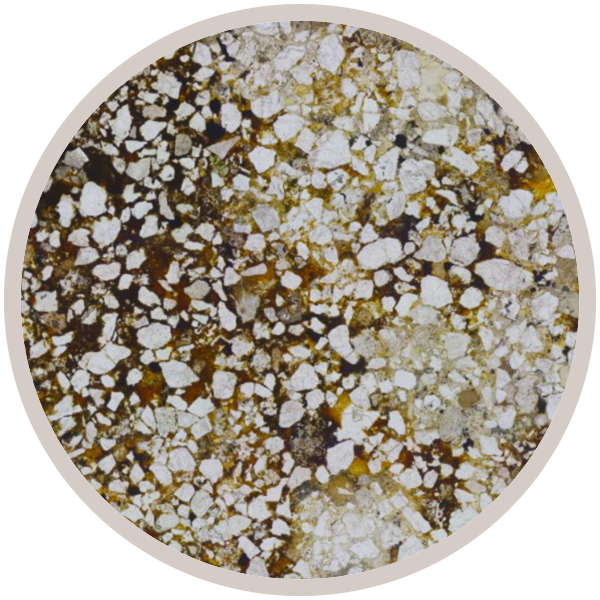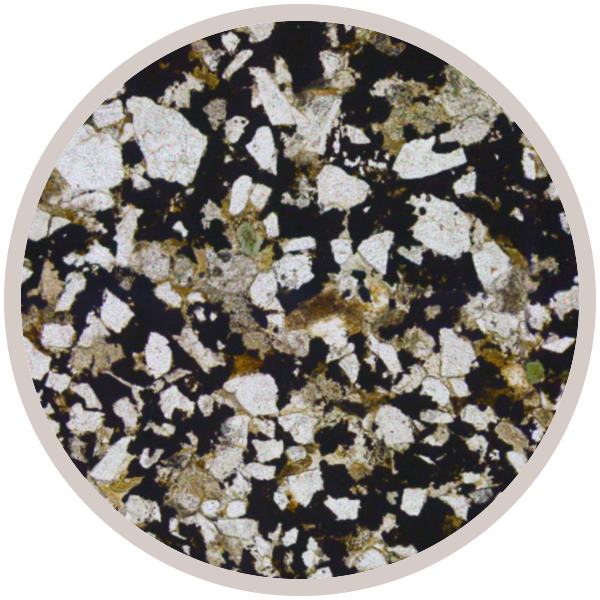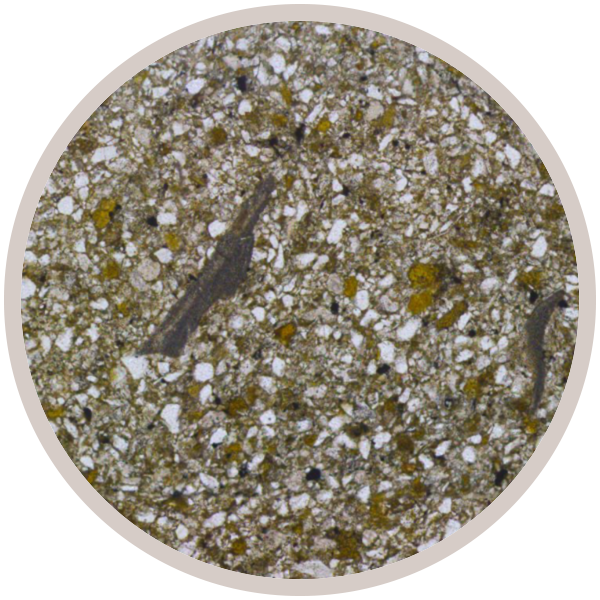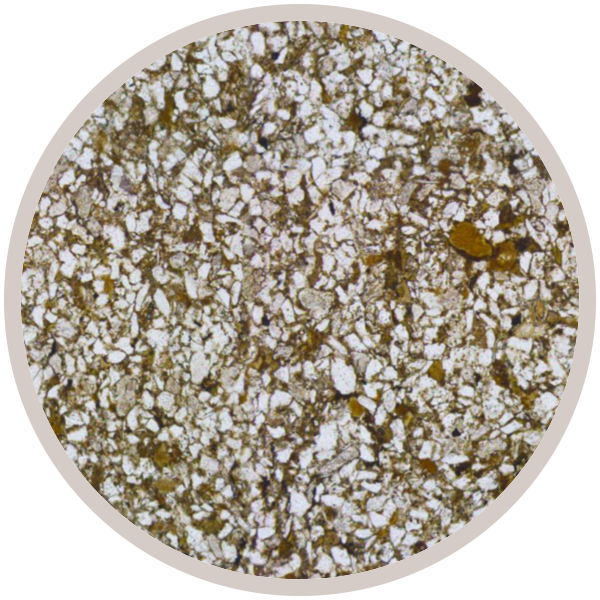
Fact sheet
Medium grey sandstone, from the same unit as SW5, but collected approximately 50 cm from the contact with the microgabbro (SW4 and SW13), near Highbridge Road Steps. There is little sign in the field of contact metamorphism ('baking') of the sandstone by heat from the microgabbro intrusion.
The sandstones were deposited in a low-lying, deltaic environment when the region lay near the equator. Flattened fossilised tree-trunks have been found in Carboniferous rocks close by in Brewin's Cutting, indicating that the area was thickly forested.
In thin section, the rock has a typical fragmentary, detrital texture. Colour variation defines clear bedding layers that are oriented vertically, across the short axis of the thin section. Colourless quartz grains are mainly subrounded to subangular, but a few highly rounded grains are also visible. Feldspars are also present, generally with dusty alteration. There is much dark brown material: some appears to be biotite mica, variably altered, as it shows high birefringence. Much of the fuzzy dark brown matter along grain boundaries is probably a mixture of clays and iron oxide or similar insoluble material. Uncommon, small clear laths are of muscovite mica. Rare grains under crossed polars are finely polycrystalline, made up of numerous much smaller grains.
Patches of black material occur sporadically. The second-largest of these, near the centre of the section, has a curved form reminiscent of a brachiopod or bivalve shell; the lower fragment of this has a pattern of holes that suggests an organic origin, perhaps a punctate shell. It is possible that this is a lingula shell, heavily altered or replaced by opaque material (hematite, phosphate?).
This sample was collected as part of the 'Macro to Micro' project.
This Collection showcases the geodiversity of a classic geological site: the Saltwells National Nature Reserve in the West Midlands.
As well as displaying thin section and hand specimen views along with information setting them in the context of their landscapes, we also include perspectives and creative responses to the geological heritage of the sites from the local community.
| Explore the stories of the rock layers at Saltwells and Wren's Nest NNRs, designed by students at King Edward VI School, Stourbridge: |
This Collection was made possible by funding awarded to the 'Macro to Micro' project by the Natural Environment Research Council (NERC) under their 'Growing Roots' scheme.
